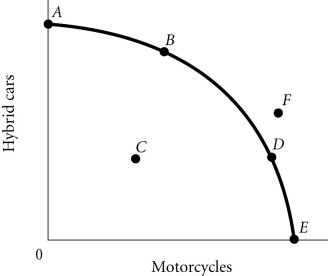A federal funds rate reduction that is caused by monetary policy will:
A. increase the prime interest rate.
B. decrease the size of the monetary multiplier.
C. increase the Fed's discount rate.
D. decrease the prime interest rate.
D. decrease the prime interest rate.
You might also like to view...
A central tenet of the position against policy activism is that
A) consumption spending is highly unstable. B) consumption spending is highly stable. C) aggregate policies have little effect on consumption. D) instability in private consumption will always be offset by variations in other elements of private spending.
If the payoff to the United States to pursuing nuclear weapons is 100 if the USSR does not pursue nuclear weapons and 50 if the USSR does, and the payoff to the USSR to pursuing nuclear weapons is 80 if the USA doesn't pursue nuclear weapons and 30
if the USA does, what is the non-cooperative equilibrium? A) The USA pursues nuclear weapons, the USSR does not. B) The USA pursues nuclear weapons, the USSR pursues nuclear weapons. C) The USA does not pursue nuclear weapons, the USSR does not pursue nuclear weapons. D) The USA does not pursue nuclear weapons, the USSR does pursue nuclear weapons.
Refer to the information provided in Figure 2.4 below to answer the question(s) that follow. Figure 2.4According to Figure 2.4, Point E necessarily represents
Figure 2.4According to Figure 2.4, Point E necessarily represents
A. only motorcycles being produced. B. overallocation of resources. C. an impossible production point. D. technological advancement.
The institution that governs monetary policy is
A. the Treasury Department. B. the President. C. the Federal Reserve. D. the Congress.